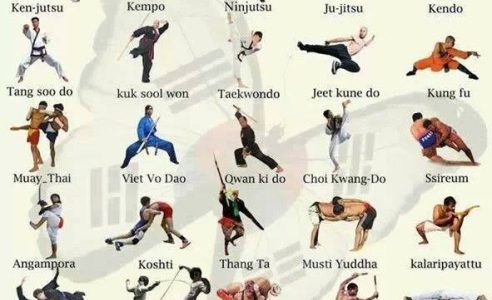Comprehending The Fundamental Differences In Between Conventional Martial Arts And Modern Battle Sports
Comprehending The Fundamental Differences In Between Conventional Martial Arts And Modern Battle Sports
Blog Article
Write-Up Developed By-Kok Hovgaard
When you think about martial arts, do you lean extra towards the typical methods or the modern-day battle sporting activities? Each course supplies one-of-a-kind benefits and experiences, formed by their philosophies and training techniques. Traditional martial arts highlight personal growth and discipline, while modern battle sporting activities concentrate on competitors and efficiency. Comprehending these differences can direct you in choosing the best approach for your journey. Yet just how do these distinctions manifest in training and ideology?
The Philosophy and Background Behind Traditional Martial arts
While many people connect martial arts with physical combat, the approach and background behind typical martial arts run much deeper. You'll locate that these techniques highlight personal growth, technique, and respect.
Stemming from ancient techniques, typical martial arts were usually established for Self-Defense and spiritual advancement. They symbolize principles such as equilibrium, harmony, and self-discipline, leading professionals beyond plain combating skills.
As you educate, you'll not just learn strategies however likewise get insights right into the society and values that shaped these arts. The rituals and practices, typically given with generations, promote a sense of community and belonging.
The Competitive Nature of Modern Fight Sports
Modern fight sports have actually transformed the landscape of martial arts into a very competitive arena, where professional athletes face off in an examination of skill, approach, and endurance.
Highly recommended Webpage 'll notice that competitions are usually arranged with strict regulations and policies, ensuring justice and safety. These events attract huge target markets, sustaining the excitement and strength of matchups.
Athletes train carefully, not just for physical expertise yet also for psychological durability, recognizing that every information counts in the ring. The adrenaline thrill throughout competitions is palpable, as boxers press their restrictions to assert victory.
Read Home and artistry included, making modern-day fight sporting activities a thrilling phenomenon that remains to progress and mesmerize enthusiasts around the globe.
Training Methods and Strategies: A Relative Analysis
The affordable atmosphere of modern-day battle sports needs cutting-edge training approaches that vary dramatically from conventional martial arts.
In contemporary training, you'll focus on details strategies, competing, and conditioning, usually using drills that mimic genuine fight circumstances. You'll see a focus on quantifiable performance and constant competition to assess your abilities.
In contrast, typical martial arts focus on types, katas, and thoughtful trainings, typically highlighting technique and regard over competition.
Training is normally much less intense and may entail repetitive method rather than real-time sparring.
While both approaches construct ability and health and fitness, modern combat sporting activities supply an extra vibrant and adaptable training atmosphere, preparing you for prompt challenges in the ring or cage.
Select the path that lines up with your goals and passions.
Final thought
In selecting between conventional martial arts and modern combat sports, it actually comes down to what you value most. If you're searching for individual growth, discipline, and a sense of neighborhood, traditional arts may be your best fit. But if you grow on competitors and real-time difficulties, modern-day battle sports could be the way to go. Eventually, both paths provide distinct benefits, so it's all about aligning your training with your individual objectives and passions.
